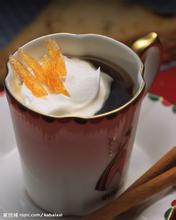Flavor and taste characteristics of Tanzanian coffee with pure flavor introduction of fine coffee in manor producing area
Pyrethrum: mainly planted by small farmers, the planting area is distributed in the southern highlands of Mbeya District and Iringa District. The annual output is estimated at 2500 tons. The centralized management department of the industry is the Tanganyika Bureau of exterminating Chrysanthemum.
Oil crops: non-traditional crops, including industrial and oil crops, such as castor, sunflower, peanut, sesame, coconut, cottonseed and soybean. Many provinces have soil and climatic conditions suitable for the growth of a variety of oil crops. . The main producing areas are in Sinianga District, Mwanza District, Dodoma District, Mtewara District, Mbeya District, Iringa District, Rovuma District, Sinjida District, Mara District, Lindi District, Tapola District, Morogoro District and Kilimanjaro District. The annual output of various oil crops is not very stable, which is mainly affected by market fluctuations and international market prices.
Beans: mainly include soybeans, cowpeas, cowpeas, mung beans, yellow chickpeas and green chickpeas. The main planting areas are in Kagera, Shinyanga, Mbeya and Arusha provinces. The lack of support in research, promotion and modernization investment is the factor restricting the increase of output.
Spices: including pepper, pepper, ginger, onion, coriander, garlic, turmeric, cinnamon, vanilla, cardamom, etc. The main problems are the lack of high-quality improved varieties and the backwardness of post-natal storage and processing technology. The export prospect of this kind of spice crop is more optimistic.
Cocoa: high requirements for rainfall and soil, vulnerable to diseases and insect pests. Mainly grown in the cities of Mbeya, Tanga and Morogoro, it is an important source of income for small farmers in the region and one of the crops in exchange for foreign exchange.
Flower cultivation: the climate of Tanzania is suitable for the cultivation of tropical and temperate flowers, which are mainly grown in Arusha, Kilimanjaro and Dar es Salaam, and their flowers are mainly sold to Europe.
Fruits and vegetables: fruits and vegetables are mainly grown by small farmers in the traditional way. In the coastal area, Dar es Salaam District, Tanga District, Mtewara District, Lindi District and other areas, the main fruits and vegetables planted are citrus, mango, coconut, lemon, watermelon, papaya, pepper, eggplant, tomato, okra, onion, cabbage. In the central region of Dorma, Sinjida and Tapola, tomatoes, onions and grapes are mainly grown. Victoria mainly grows cabbage, tomatoes, beans, mangoes, plantains and bananas. The main fruits and vegetables grown in the north and south highlands are tomatoes, cabbage, onions, potatoes, carrots, cauliflower, pears, peaches, plums, avocados, plantains and bananas. When greeting important guests, the Maasai people in Tanzania walk on stilts to keep their feet off the ground to show that they are clean and show their warm respect for the guests.
Market for coffee in Tanzania:
Coffee exports from Tanzania (Tanzania) play an important role in the whole national economy.
In the past, the coffee industry in Tanzania has been dominated by manor cultivation, but now more than 85% are grown by small farmers. Many small farmers form cooperative organizations, the most important of which is the Kilimanjaro Cooperative Alliance (KilimanjaroCooperativeUnion, referred to as KNCU). Tanzanian coffee is sold by the Tanzanian Coffee Management Council (TanzanianCoffeeMarketingBoard, TCMB) to private exporters by auction. In the 1980s, most coffee sales in Tanzania shifted from auctions to being sold directly to the Tanzania Coffee Management Committee.
This has changed, and the coffee industry is being reformed to allow individuals or groups to buy coffee in the future, when coffee will be graded in different ways. in order to attract coffee producers from Tanzania, buyers from Germany, Finland, the Netherlands, Belgium and Japan:
Coffee bean-shaped berry coffee in Tanzania produces a lot of coffee and is said to be more fragrant than ordinary coffee. Generally speaking, coffee beans in Tanzania have extraordinary quality. For example, the fine Tanzanian AA coffee (ChaggaAA), produced in the Moshi district near Mount Kilimanjaro, is famous for its full-grained and fragrant quality.
The characteristics of Tanzanian coffee:
Flavor: full-bodied and refreshing, with lower acidity than Kenyan coffee, pure flavor and aroma
Suggested baking method: medium baking
★★: good

Important Notice :
前街咖啡 FrontStreet Coffee has moved to new addredd:
FrontStreet Coffee Address: 315,Donghua East Road,GuangZhou
Tel:020 38364473
- Prev

Special introduction to the producing area of Jamaica Blue Mountain Coffee with balanced Acid, Glycol and Alcohol flavors.
Blue Mountain belongs to the mid-subtropical monsoon humid climate region, with sufficient light, abundant rainfall and long frost-free period, with an annual average temperature of 17.8 ℃. The complex geology and geomorphology, fertile soil and warm and humid climate endow the blue mountains with beautiful scenery and rich natural resources. Blue Mountain is located at the eastern foot of Jiuyi Mountain, and its topography inclines from southwest to northeast. The mountains, hills, hills and flat areas are interlaced with each other.
- Next

An introduction to the characteristics of the manor producing area of Indonesian civet coffee with unique flavor and taste of Kopi Luwak
The Republic of Indonesia is divided into the Greater Jakarta Capital Zone, the Yogyakarta Special Zone, the Aceh Special Zone, and 30 provinces, with a total of 33 first-level districts. The second-level administrative region has 396 counties and 93 cities (2014 statistics). Other major economic cities include Surabaya and Wan
Related
- Detailed explanation of Jadeite planting Land in Panamanian Jadeite Manor introduction to the grading system of Jadeite competitive bidding, Red bid, Green bid and Rose Summer
- Story of Coffee planting in Brenka region of Costa Rica Stonehenge Manor anaerobic heavy honey treatment of flavor mouth
- What's on the barrel of Blue Mountain Coffee beans?
- Can American coffee also pull flowers? How to use hot American style to pull out a good-looking pattern?
- Can you make a cold extract with coffee beans? What is the right proportion for cold-extracted coffee formula?
- Indonesian PWN Gold Mandrine Coffee Origin Features Flavor How to Chong? Mandolin coffee is American.
- A brief introduction to the flavor characteristics of Brazilian yellow bourbon coffee beans
- What is the effect of different water quality on the flavor of cold-extracted coffee? What kind of water is best for brewing coffee?
- Why do you think of Rose Summer whenever you mention Panamanian coffee?
- Introduction to the characteristics of authentic blue mountain coffee bean producing areas? What is the CIB Coffee Authority in Jamaica?

